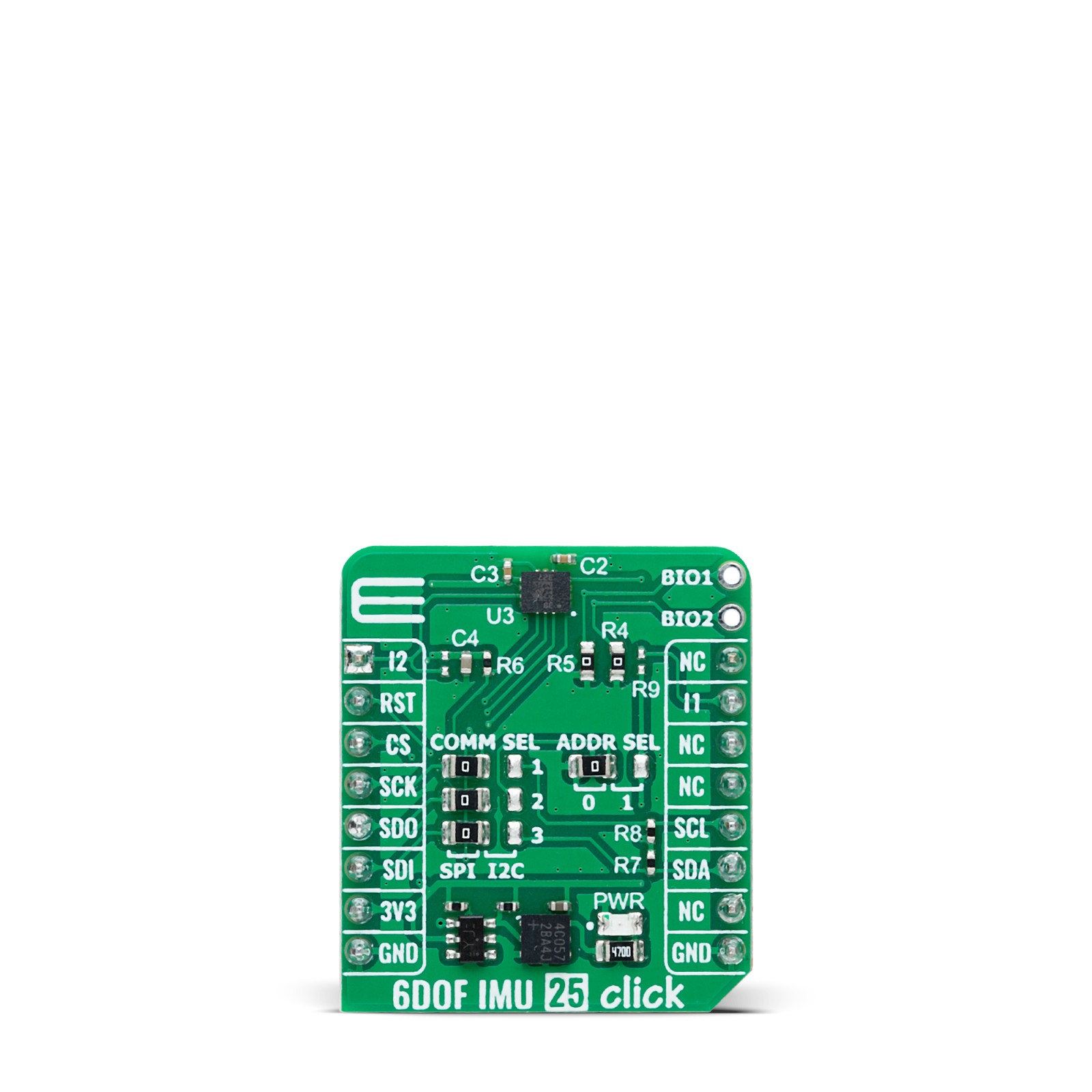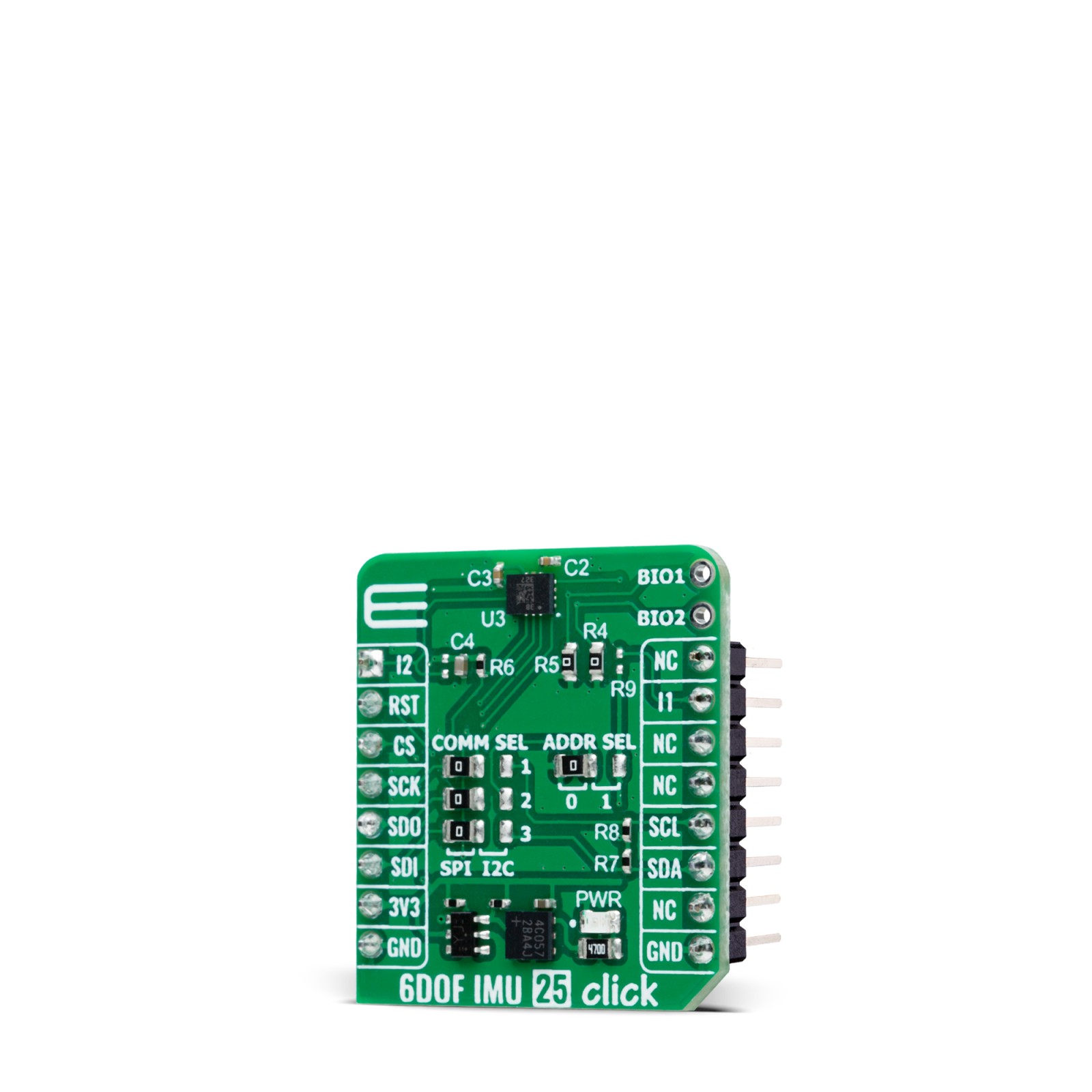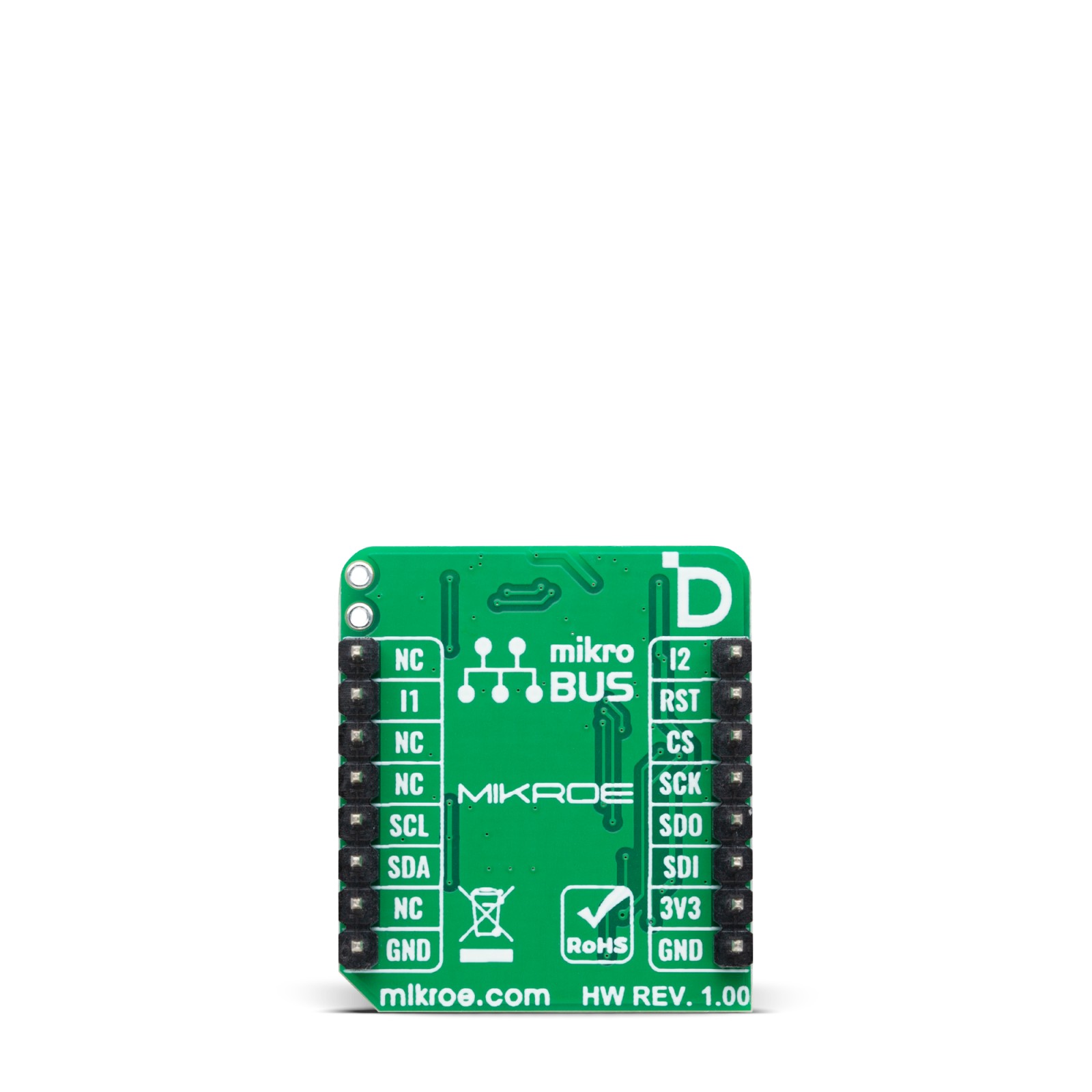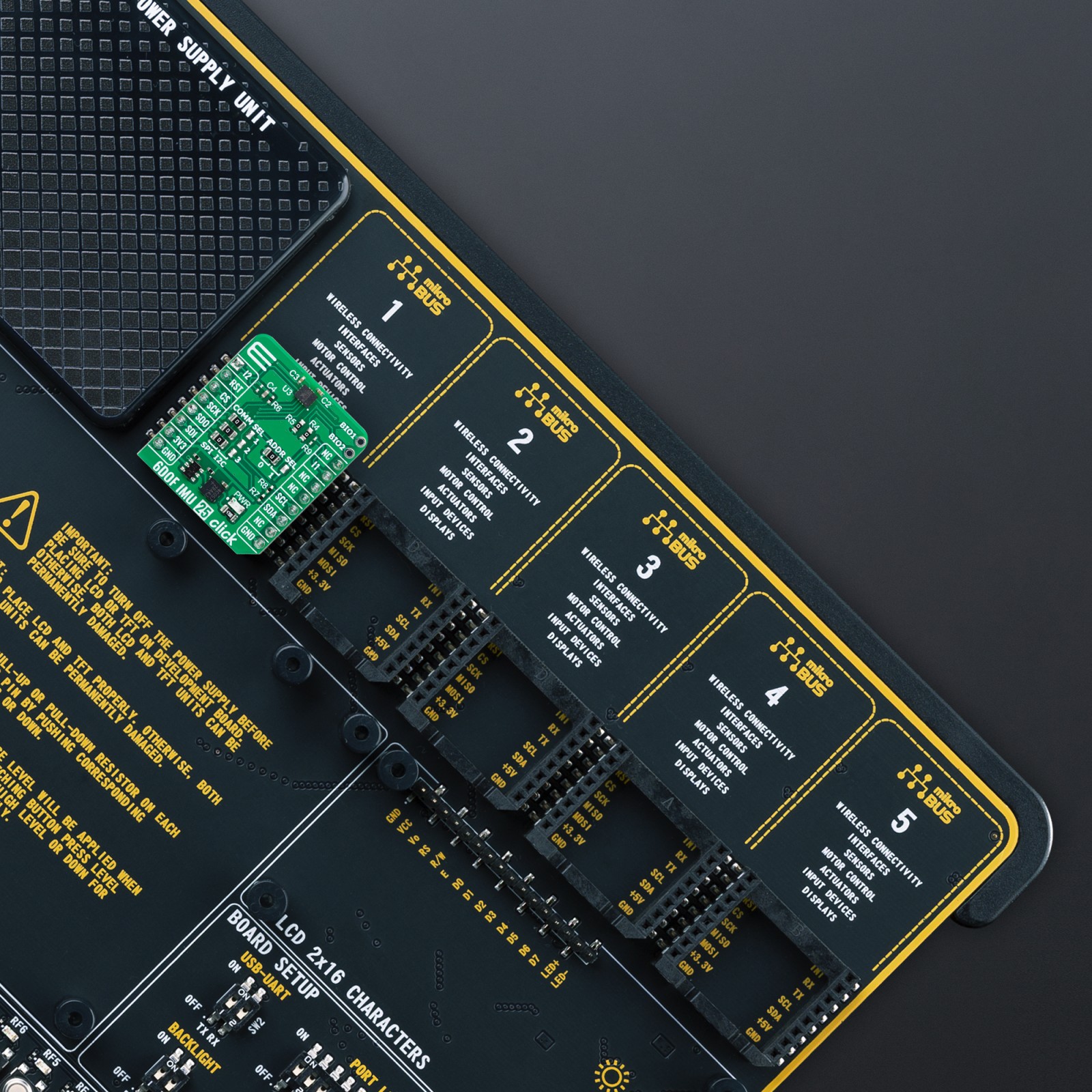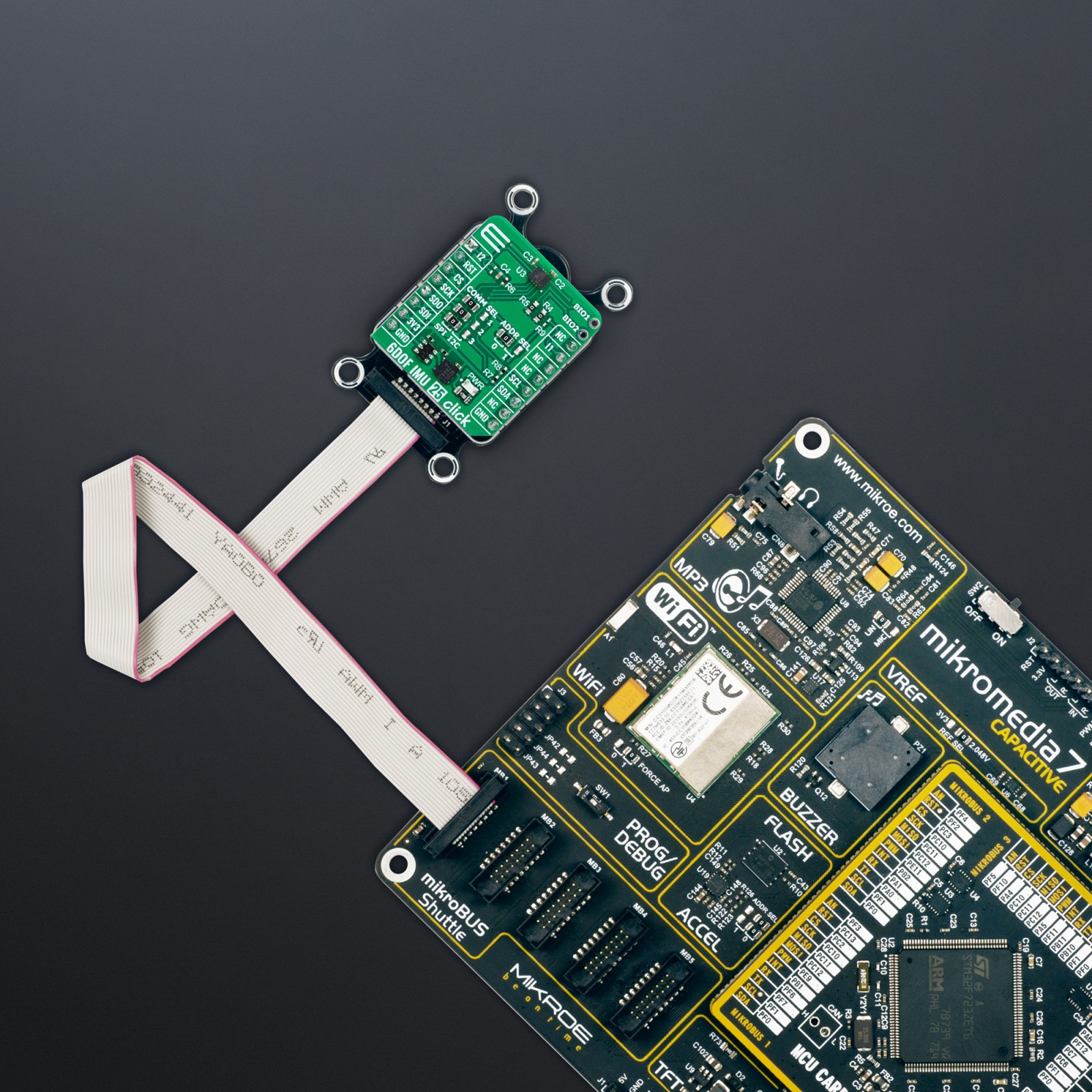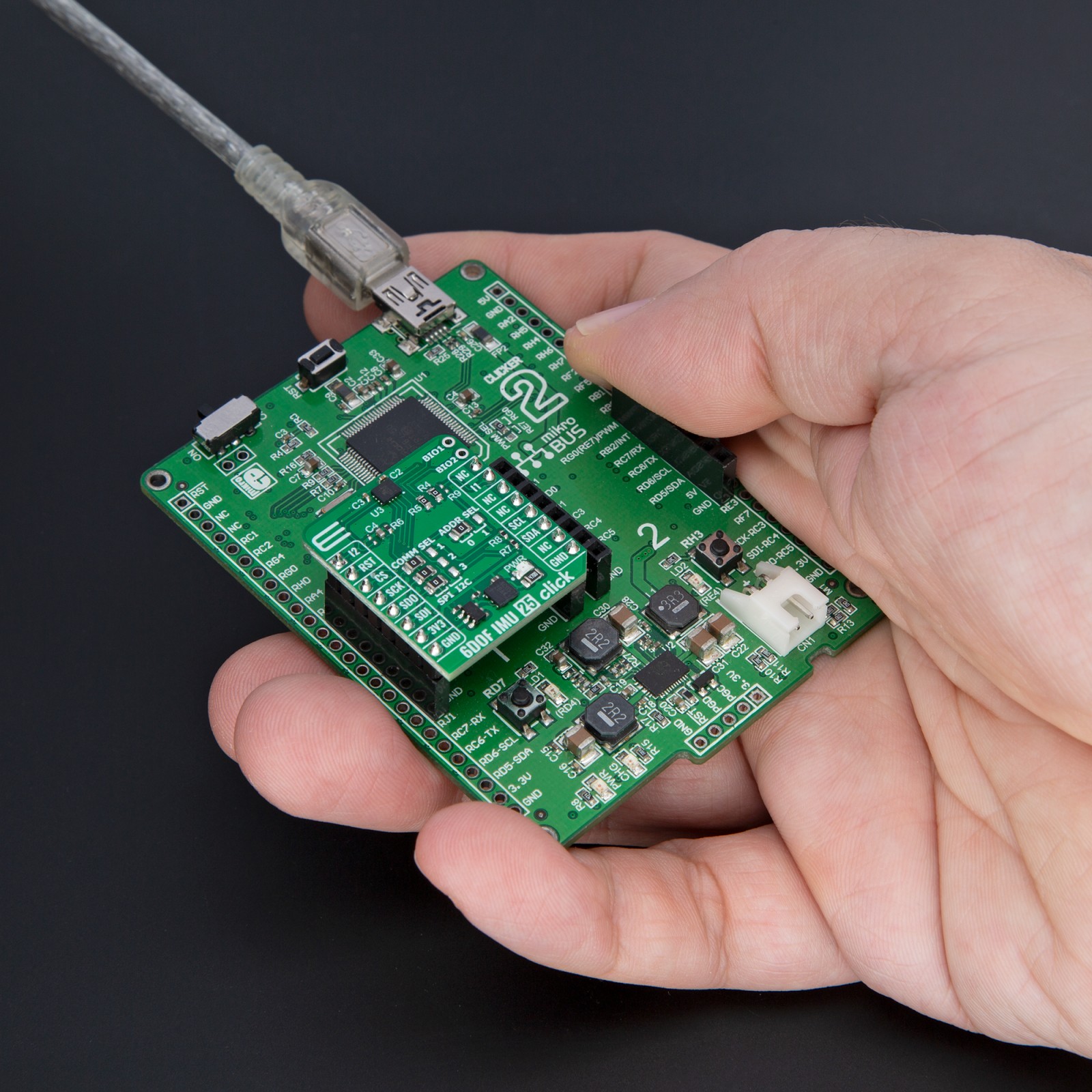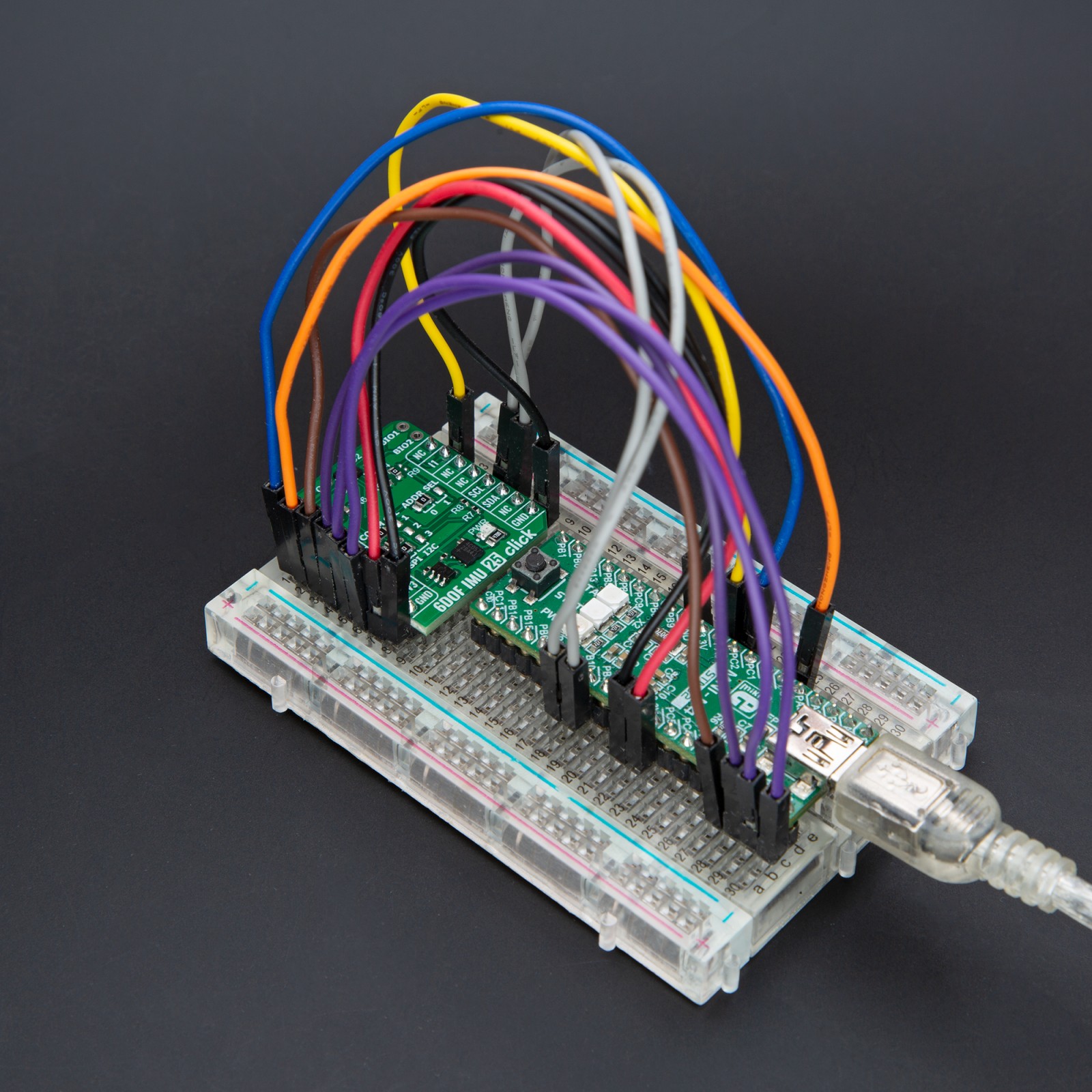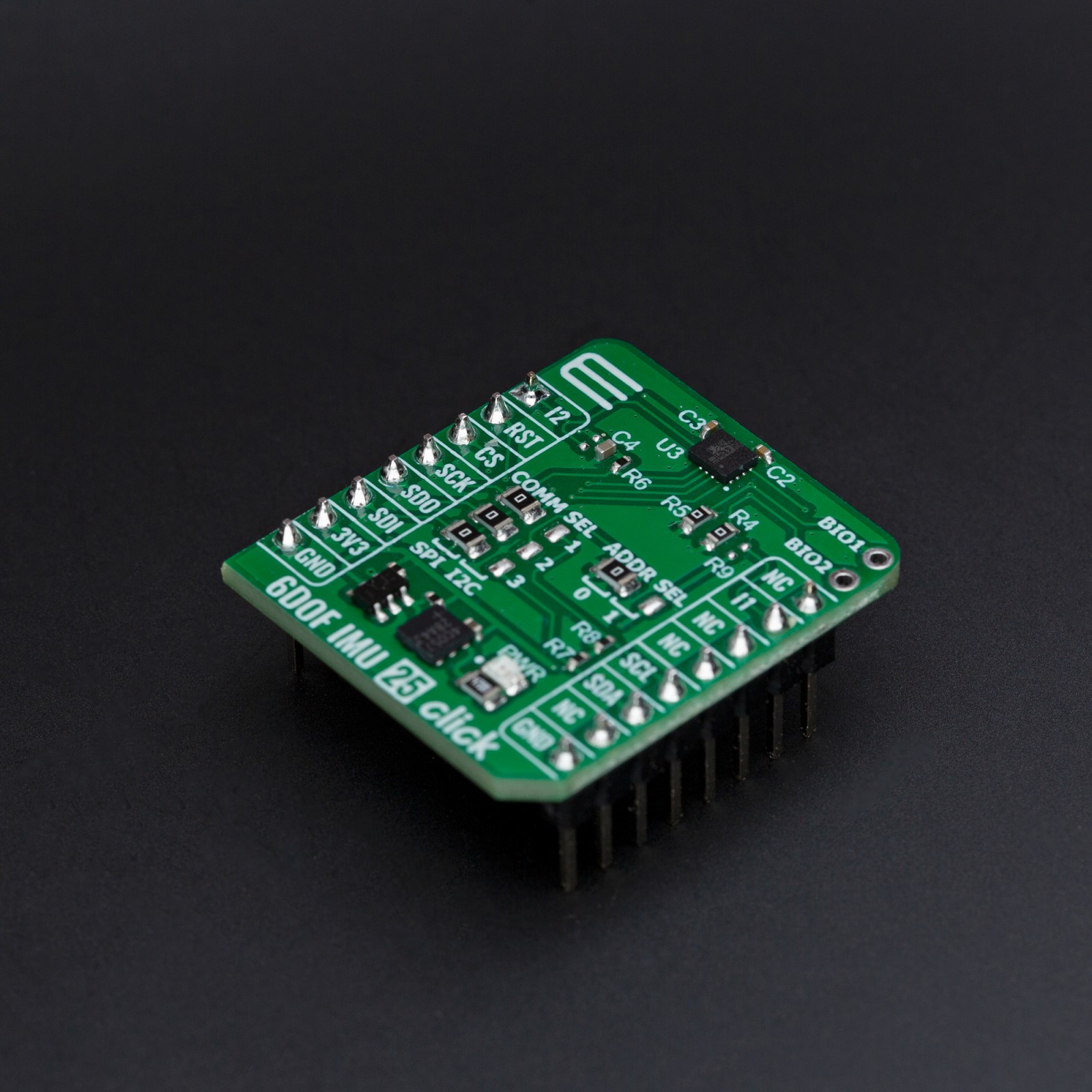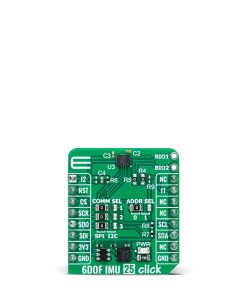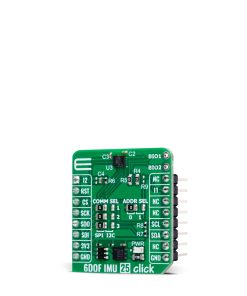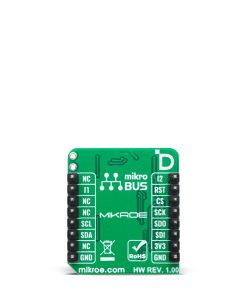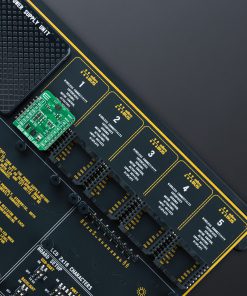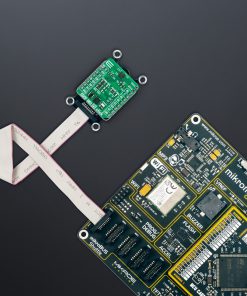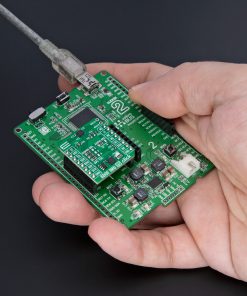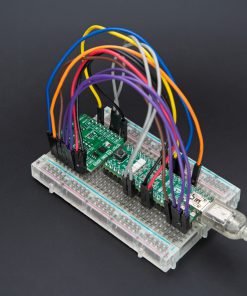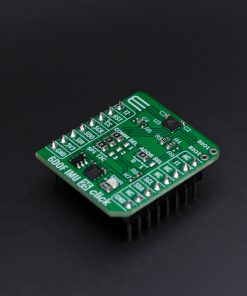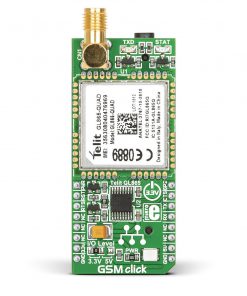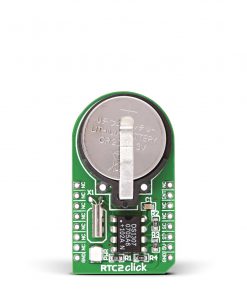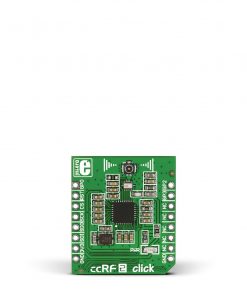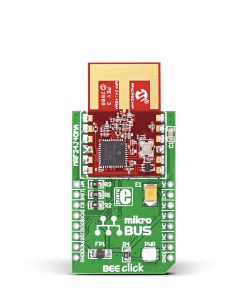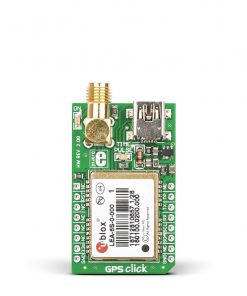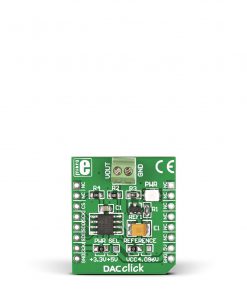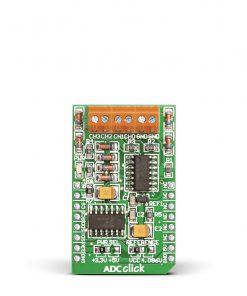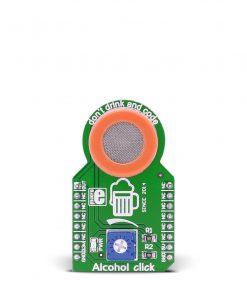6DOF IMU 25 Click
R460.00 ex. VAT
6DOF IMU 25 Click is a compact add-on board for biopotential signal detection and motion tracking applications. This board features the ST1VAFE6AX biosensor from STMicroelectronics, which combines a vertical analog front-end (vAFE) for biopotential sensing with a high-performance 6-axis IMU. The IMU features a 3-axis accelerometer and 3-axis gyroscope with adjustable full-scale ranges, along with advanced functionalities like finite state machine (FSM), adaptive self-configuration (ASC), and a machine learning core (MLC) for on-device processing. The board also includes a 4.5KB FIFO buffer for efficient data handling and supports I2C and SPI communication interfaces for easy integration. Ideal for heart rate and pulse monitoring, electrocardiograms (ECG), activity tracking, and wearable device applications, 6DOF IMU 25 Click delivers precise biopotential and motion analysis in a compact and power-efficient design.
6DOF IMU 25 Click is fully compatible with the mikroBUS™ socket and can be used on any host system supporting the mikroBUS™ standard. It comes with the mikroSDK open-source libraries, offering unparalleled flexibility for evaluation and customization. What sets this Click board™ apart is the groundbreaking ClickID feature, enabling your host system to seamlessly and automatically detect and identify this add-on board.
Stock: Lead-time applicable.
| 5+ | R437.00 |
| 10+ | R414.00 |
| 15+ | R391.00 |
| 20+ | R376.28 |

